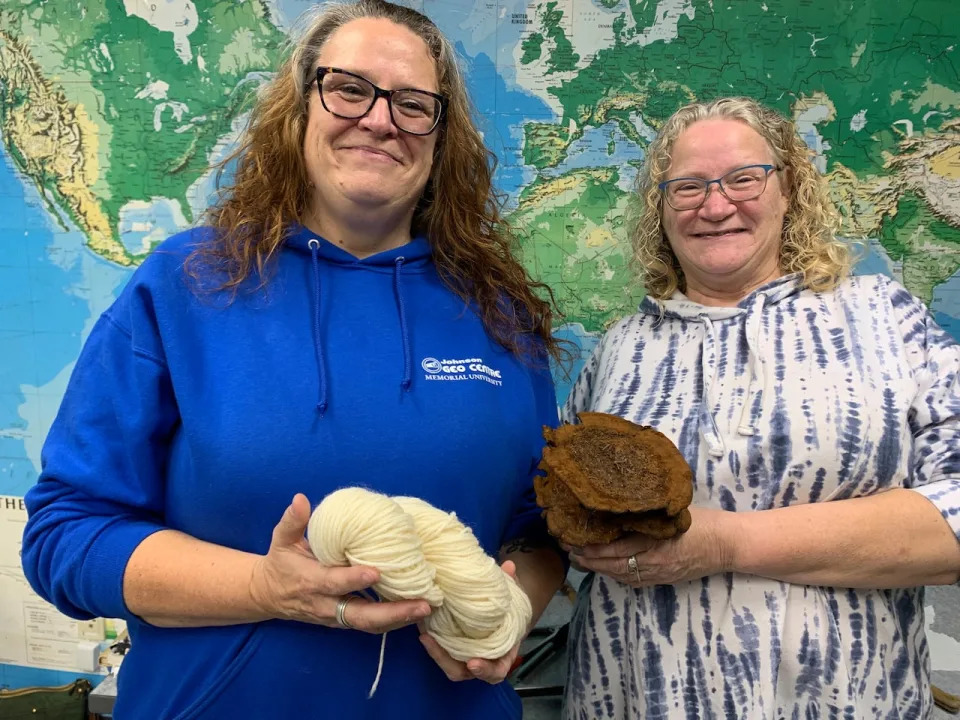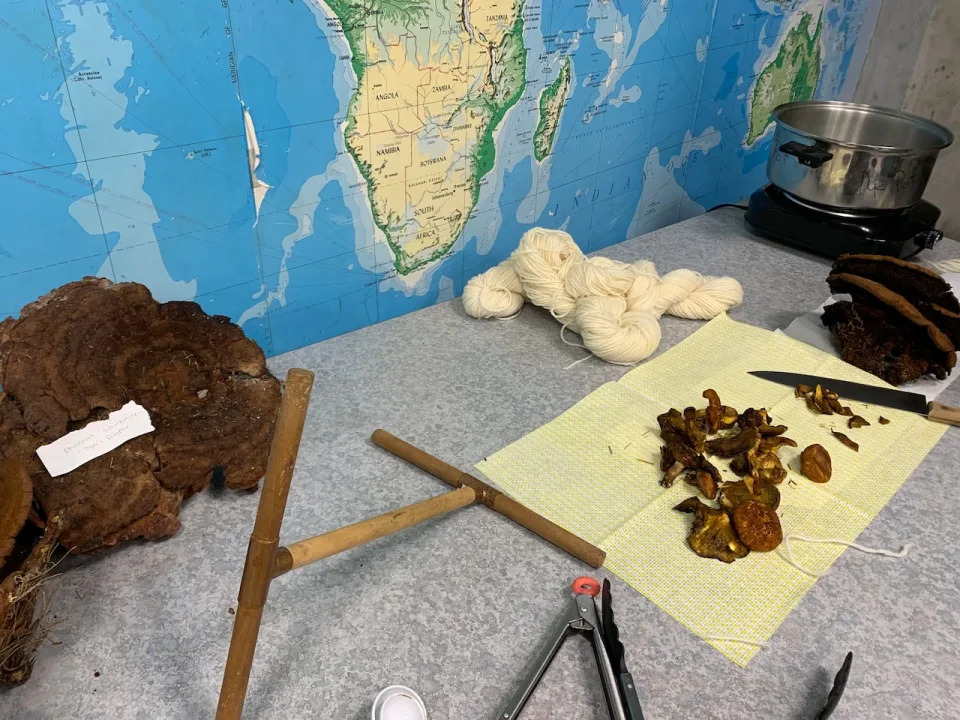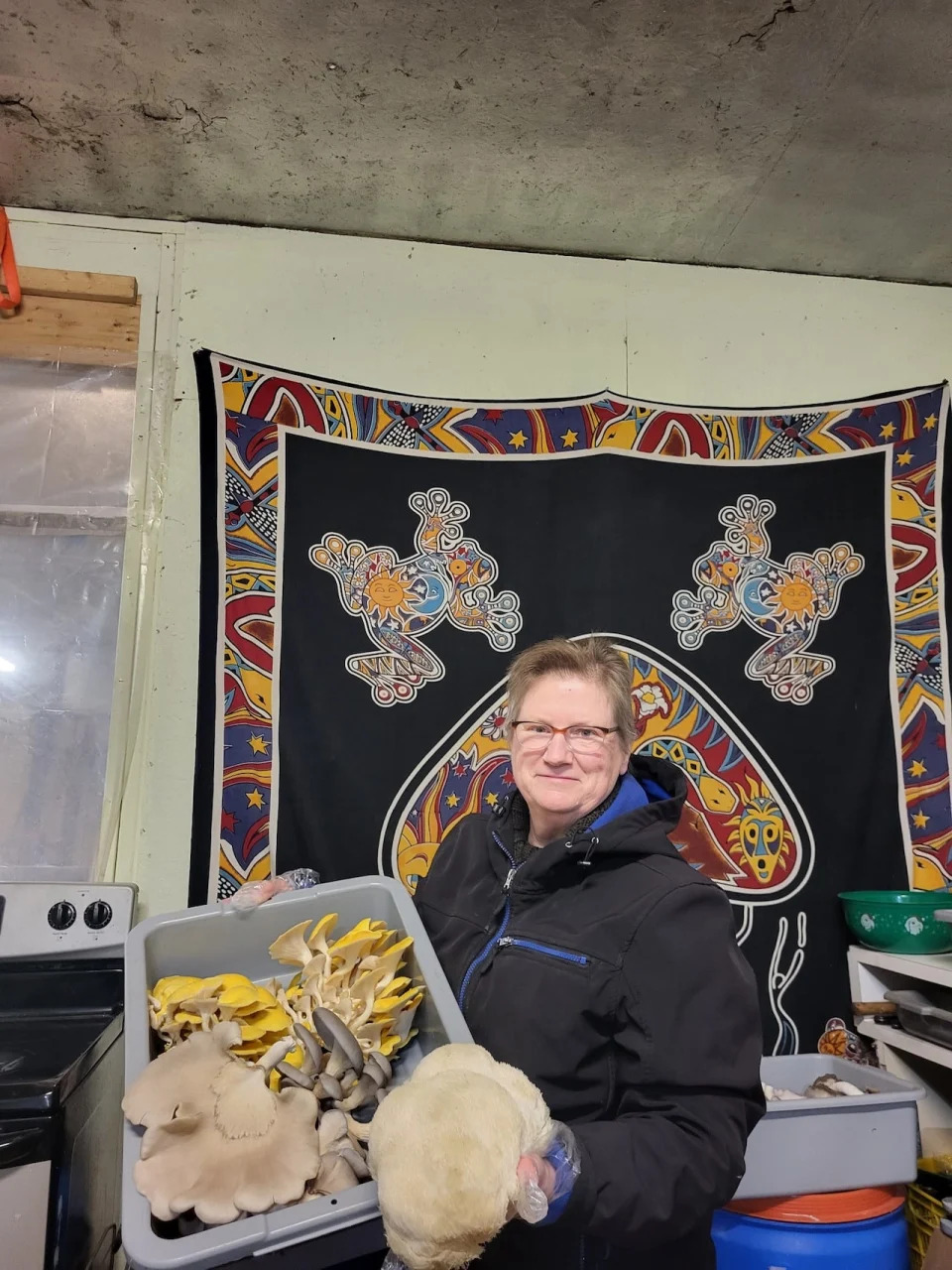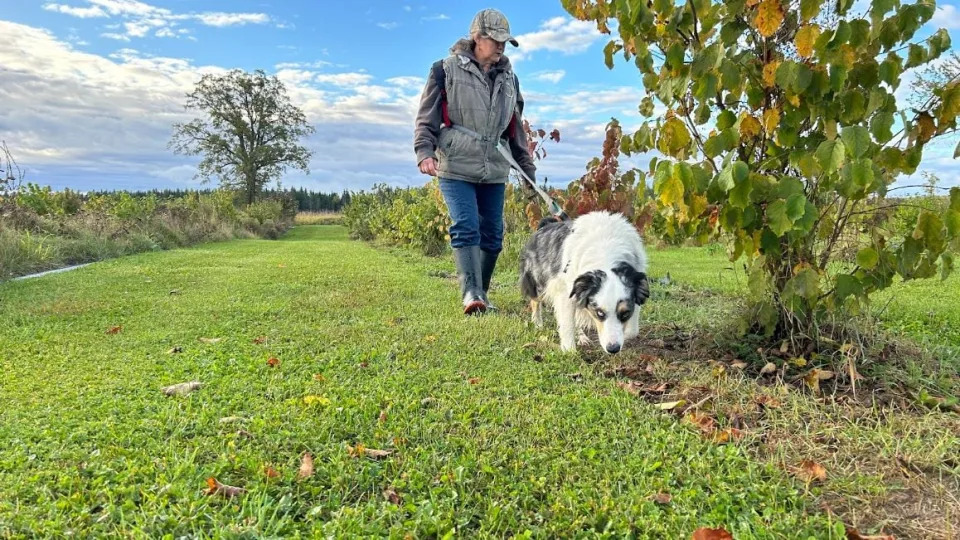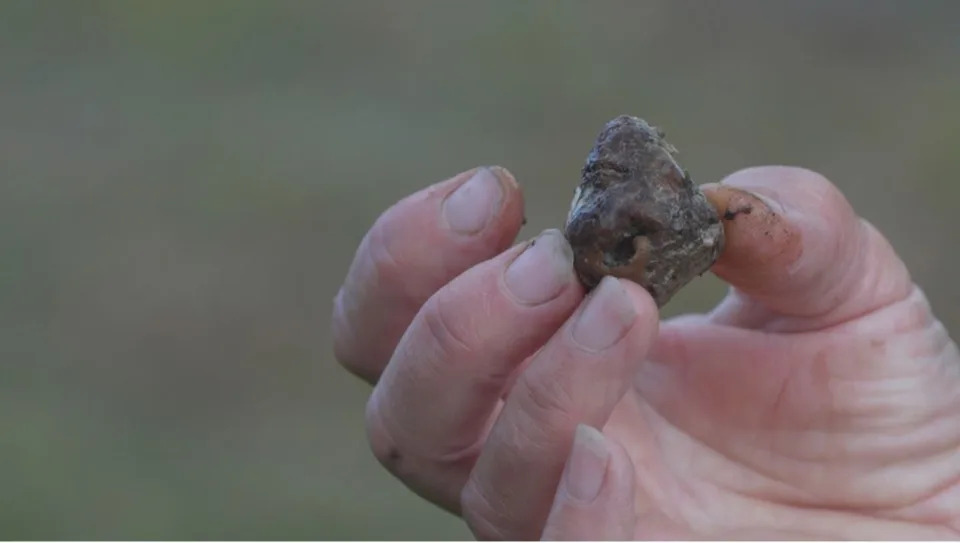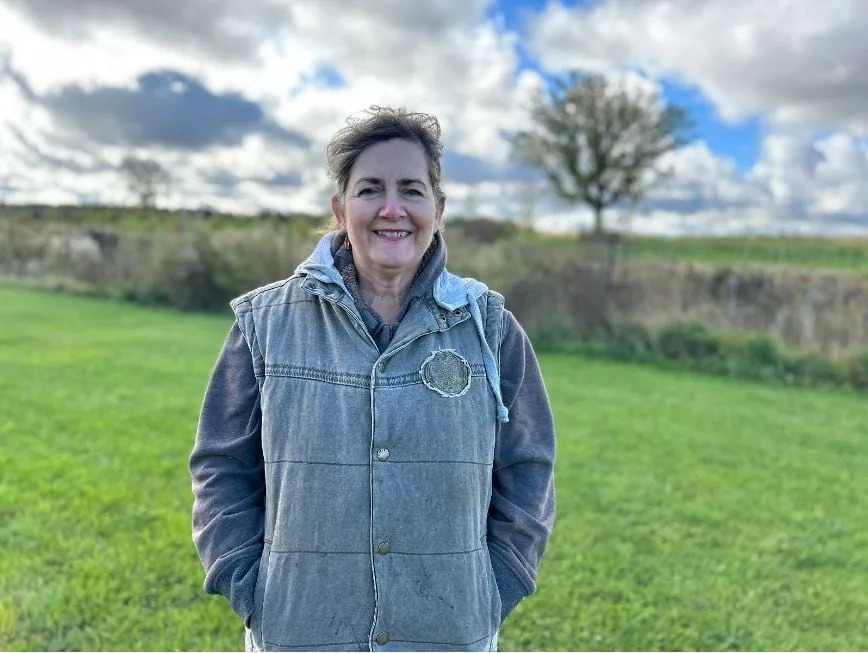CBC
Sat, October 21, 2023

Parks Canada is starting to use new tools in its fight to save Kejimkujik's hemlock trees, which are under threat of being wiped out by an invasive insect.
Park ecologist Matthew Smith said park staff have been undergoing training to use insecticides that can be sprayed on the bark of the iconic trees to inoculate them against the hemlock woolly adelgid.
Previously, the only insecticide they could use was injected into tree trunks. That application takes significantly longer per tree than the sprays.
Smith said it's good news because more trees can be treated, including ones that are already badly infected. One of the new sprays, he said, is much faster-acting than other treatments.
"It goes into the tree and can almost right away help control adelgid, so it's good for trees that are really declining and you need to hit them quickly."

Park ecologist Matthew Smith says Eastern hemlocks provide habitat for old-growth species, and cool streams and rivers because of the shade they provide. (Steve Berry/CBC)
The adelgid has been wreaking havoc on hemlocks in eastern North America for many years, and was first seen in Nova Scotia in 2017.
The tiny bugs kill hemlock trees by attaching to the base of needles and feeding on sugars, starving the tree of nutrients. They leave behind a white substance that looks like wool, giving them their name.
The pest was found in Kejimkujik in 2018.
"Pretty much every stand now has it in the park and we're starting to see some decline," said Smith."There's some stands that the trees are very thin, some trees have started to die. But we're lucky that we found it earlier than other places."
The provincial Department of Natural Resources is also using the spray pesticides on high-priority hemlock stands found on Crown lands marked for conservation.
Most hemlocks will die
Smith said the park, the province and the Canadian Forest Service have been working together closely on hemlock conservation. He said those efforts have gone well, but Nova Scotians should still expect about 90 per cent of hemlock trees to die over the next 10 to 15 years.

The hemlock woolly adelgid feeds on sugars in hemlock trees' needles and leave behind a fluffy white substance that looks like wool. (The Canadian Press/Ontario Ministry of Natural Resources and Forestry)
"In the future, it will be a rare tree on the landscape, which is hard to think of because it is … common in quite a few areas."
That's especially true of Kejimkujik, where one in 10 forest stands have hemlock trees.
In 2019, park ecologists established a five-year plan for hemlock management. With that plan facing its conclusion next March, Smith said he and colleagues are now creating a long-term management plan that includes treating trees with pesticide every five to 10 years.
Biological pest control on the horizon
They're also preparing for the introduction of a beetle that preys on the adelgid — a form of biological pest control.
Lucas Roscoe, a research specialist with the Canadian Forest Service, said a major factor in the spread of hemlock woolly adelgid in Nova Scotia is the lack predators.
"Because of this, HWA (hemlock woolly adelgid) populations can essentially grow out of control," Roscoe said in an email.
"In places where HWA is from originally, such as British Columbia, HWA is rarely a problem. This is due to a number of highly specialized predators in the environment which can only survive off of HWA."

Some hemlocks in Nova Scotia are hundreds of years old. (Jeorge Sadi/CBC)
Roscoe said the Atlantic Forestry Centre is looking at how to apply bio control in Nova Scotia, with an eye on a beetle species called Laricobius nigrinus.
That beetle, Roscoe said, has been extensively studied and used for bio control in the United States for two decades.
"This species only targets HWA, and no other species. Based on the significant amount of research undertaken on this insect, we feel that it is a good candidate for this program," he said.
Details of the plan for bio control are still being finalized. Roscoe said more information will be shared with the public later this month.









